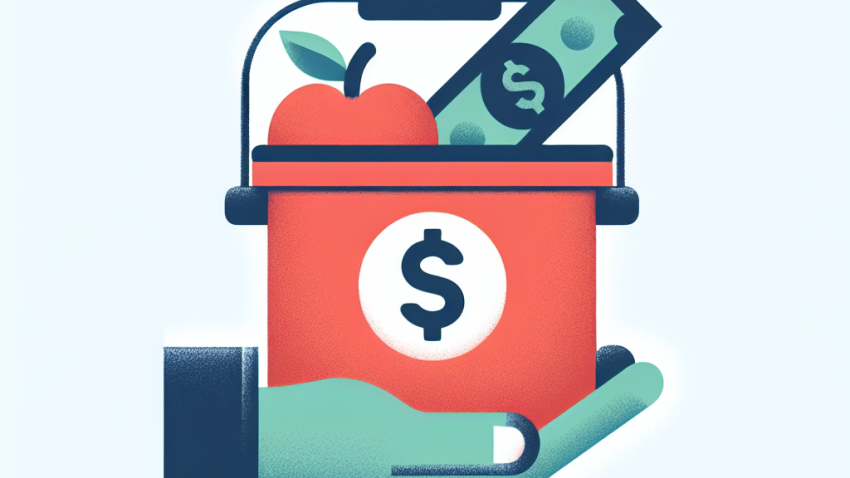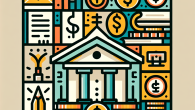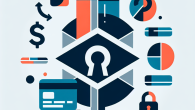
Food Banks and Finance: The Direct Line Between Economic Policy and Hunger
The Hidden Costs of Banking: What They Don’t Want You to Know
Let’s cut straight to the chase. Banking—yes, the sparkly, marble-floor world of free pens and vague promises—costs you more than you think. I’ve spent enough time unearthing fine print in financial policies to know that where there’s a dollar, there’s often a loophole. And while you’re dreaming of compound interest and cashback bonuses, your bank might be silently draining your wallet through a litany of hidden fees, opaque practices, and clever marketing designed to lull you into financial complacency. Let’s shine a bright, unfiltered spotlight on the real cost of your “free” checking account.
What Exactly Are “Hidden” Banking Costs?
When I say “hidden costs,” I’m not talking about some shadowy conspiracy involving trench coats and dark alleys. No, these are pitfalls integrated directly into the foundation of traditional banking. These include:
- Maintenance Fees that keep charging you for the privilege of keeping your money with them.
- ATM Fees every time you dare to stray out of their network.
- Overdraft horrors that masquerade as helpful “protection.”
- Foreign transaction fees that bite into your vacation fun fund.
- Minimum balance penalties for not being rich enough to bank like you’re rich.
And that’s just page one of the bank’s revenue playbook. So let’s dig a little deeper and unravel how these are impacting your finances without you even noticing.
The Illusion of “Free” Banking
If it says “free,” it probably isn’t. Many checking and savings accounts advertise as “fee-free,” but dig into the disclosures and you’ll find the catch. Some common tricks include:
- Waiving fees only if you maintain a minimum monthly deposit or balance.
- Monthly “service fees” that pop up if you miss one requirement.
- Fees for paper statements, replacement cards, expedited services—even for calling customer support.
One study by the Consumer Financial Protection Bureau (CFPB) found that the average American pays more than $290 a year in overdraft and NSF (non-sufficient funds) fees alone. That’s not a rounding error. That’s a car insurance premium.
Overdraft: The Friendly Neighborhood Fee That Isn’t
Banks often sell overdraft protection as a helpful feature—”We’ll cover your purchase even when your account’s low, so you’re not embarrassed at checkout.” How generous, right? Wrong. Many banks charge $30 or more per overdraft transaction, and the hits just keep coming. If you make three small debit card purchases while slightly overdrawn, you could end up $90 in the red for what amounted to a latte, a sandwich, and a bus ticket.
Even worse? Some institutions manipulate transaction posting order—not illegal, just sneaky—to maximize overdraft fees. Instead of processing your $3 coffee first, followed by the $45 internet bill, they’ll reverse it. Boom—multiple overdrafts instead of one.
ATM Fees: The Silent Budget Killer
Ever needed cash only to find yourself far from your bank’s ATM? You grab money from a nearby ATM, but what happens? Instant regret in the form of:
- A $3 non-network ATM charge from your bank
- A $3 usage fee from the ATM owner
Congratulations—you just paid $6 to access your own money. It’s legal, yes. Ethical? I’ll let your conscience decide. But it’s a glaring example of how systemic costs can chip away at your financial autonomy.
But Wait, There’s More: Currency Conversion And International Fees
Not planning a European getaway anytime soon? Doesn’t matter. Many banks charge a foreign transaction fee on purchases made from international vendors—even if you’re buying that handmade ceramic cup off Etsy while wearing pajamas in Idaho.
Typically 1–3% per transaction, these fees often go unnoticed because they’re buried in statement details. But over time, especially if you shop globally (who doesn’t these days?), that money adds up. And the bank never forgets its cut.
Transparency—or the Lack Thereof
According to research from the Pew Charitable Trusts, more than half of the largest U.S. banks fail to clearly disclose all fees and terms in their account documentation. And when they do? The language is often dense, tedious, and written with one purpose: discourage meaningful comparison.
Don’t just skim the brochures with the happy family on the cover. Go full bloodhound on the fee schedules, account disclosures, and footnotes—the real truth is in the fine print that no one reads but should (shameless plug: or you could read me—I volunteer as tribute).
So, What Can You Do About It?
You’re not powerless. Here’s your Ellie-approved checklist for fighting back—with fiscal flair, of course:
1. Read the Fee Schedule (All of It)
Take 15 minutes to understand what charges you might face. Most banks are legally required to make these documents available online or in-branch.
2. Consider a Credit Union or Online Bank
Credit unions are not-for-profit and often more consumer-friendly. Online banks, with lower overhead, tend to offer accounts with zero fees and higher yield savings. Just make sure they’re FDIC-insured.
3. Set Up Low Balance Alerts
Most banks offer customizable alerts via app or email. Knowing when you’re nearing your limit can prevent accidental overdrafts, and save you from a distressing fee-fest.
4. Choose No-Fee Accounts
They exist—and not only under rainbows. Look for accounts that don’t require minimum balances, charge zero monthly fees, and refund ATM charges. (Yes. Some saints still walk among banks.)
5. Monitor, Monitor, Monitor
Make it a weekly habit to check your statements. If you’re getting charged for things you didn’t expect, contact your bank and ask for an explanation—or better yet, find a new home for your money.
Consumer Advocacy Begins With Awareness
We can’t change what we don’t talk about. And trust me: banks are counting on your silence. The better informed you are, the less power they have to quietly siphon funds through outdated models and opaque systems.
So let’s be loud. Let’s be curious. Let’s question the status quo, one fee at a time. Because behind every $3 ATM charge is a system that needs a little shaking up—and I’m just the woman to do it.
If you’ve had an experience with hidden banking costs that made your jaw drop—or your bank account—we’d love to hear about it. Reach out via our contact page or read more about our mission at About Us. The more stories we share, the more change we can create.
Now go double-check your statement. Ellie’s orders.









Leave a Reply